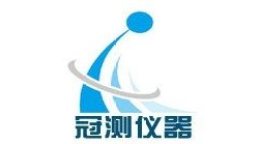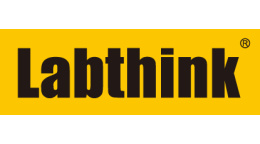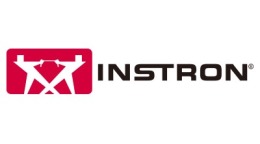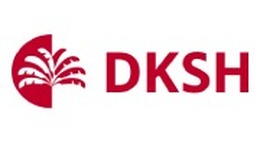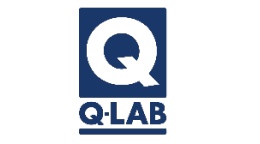方案详情文
智能文字提取功能测试中
Achieving Ultra-Sensitive Inductively Coupled Plasma-3 of 4 Laser ablation (LA) is a direct solid sampling tech-nique that uses a laser pulse to remove smallamounts of mass (pg-fg scale) from a sample ofinterest. Combining LA with inductively coupledplasma- mass spectrometry (ICP-MS) offers veryattractive technical benefits for the analysis of solidsamples, which include little to no sample prepara-tion, high precision measurements, and superiorsensitivity (down to ppb levels) with respect to otheratomic spectroscopy methods. LA-ICP-MS analysisalso offers both elemental and isotopic information.Depending on the laser sampling method deployed,LA-ICP-MS can be used for traditional bulk analysis,as well as for spatially-resolved analysis such aselemental/isotopic mapping and depth profiling. Applied Spectra Inc.’s J200 Tandem LA - LIBS Instrument LA-/CP-MS offers elemental and isotopicinformation, and can be used for traditionalbulk analysis, as well as for spatiallyresolved analysis such as elemental/isotopic mapping and depth profiling. Applied Spectra Inc.'s J200 LA instrument was inter-faced with a Bruker Aurora Elite ICP-MS to establishfigures of merit for this combination. NIST glassSRMs (trace elements in glass) were analyzed to de-termine the absolute mass that can be detected andto determine limits of detection (LODs). Operating Parameters Applied Spectra Inc.’s J200 LA Instrument 266 nm Nd:YAG laser (ns) Flex sample chamber with helium or argon gasflow NIST SRM 612 glass sample LA transient data analyzed with Applied SpectraData Analysis Software package Achieving Ultra-Sensitive Inductively Coupled Plasma- Mass Spectrometry (LA-ICP-MS) Analysis with the J200 LA Instrument:A Glass Sample Study 2 of 4 Bruker Aurora Elite ICP-MS Time resolved "high sensitivity mode"detection ●Peak hopping mode: 7Li+, 47Ti+,-208159Co+, 88Sr+, 121Sb+, 140Ce+,177Hf+,195Pt+, 197Au+,208Pb+,232Th+, and 238U+ Synchronized instrument triggering with J200 Tandem LAinstrument Sample Analysis The glass sample (NIST SRM 612) was placed into the J200LA instrument Flex sample chamber. The Flex chamber can bepurged with either helium or argon so that when the laser pulseremoves a tiny portion of the sample in the form of fine par- Bruker Aurora Elite ICP-MS ti- cles, the particles are swept out of the LA chamber into the ICP. Particles enter the ICP plasma where theparticles are vaporized, atomized, and ionized/excited. The ions pass through a set of differential pumpingstages, steered through ion optics, and into the quadrupole before reaching the detector. The NIST glass wasanalyzed with increasing 266 nm laser pulses (5, 10, 15, 20,25, and 50) to introduce increasing amounts ofmass into the ICP-MS. An example of the crater profile from 25 laser pulses can be seen in Figure 1 Figure 1. Laser ablation crater (60 um spot) displayed using a white-light interferometric microscope (Zygo). Crater is a result of 25 laser pulsesfrom a 266 nm laser at 0.57 ±0.01 mJ The sample was analyzed in triplicate for each set of laser pulses. To simplify data analysis, ASl offers a fullyintegrated data analysis software that allows the user to process and integrate transient peaks with ease. Withthe integrated data analysis software that comes with the instrument, the analyst does not have to create hisor her own software code or use 3rd party software that may not be optimized for robust LA-ICP-MS analy-sis. An example of ASI’s LA data analysis software can be seen in Figure 2. ICP-MS data files can be easilyloaded into the data analysis software, where transient peaks can be integrated and converted into tables ofnumerical values or into a full mass spectrum. Si C Figure 2. ASI LA data analysis software screen shot illustrating how transient data can be integrated. Any ICP-MS data files can be loaded intothe data analysis program, allowing the J200 LA instrument to be coupled with any ICP-MS instruments. An example of the integrateddata is displayed for 60Ni in the bottom right of the screen shot (All elements are integrated and saved into the data file, but 60Ni shownabove for simplicity). The craters from the 5, 10, 15, 20,25, and 50 laser pulses onthe surface of the NIST 612 glasssample were measured using theZygo microscope to determinethe volume (um3) ablated. Thesevolumes were then converted intomass (using density of glass =2.3g/cm3), and plotted against the re-sponse for each element in Figure3. The amount of material ablatedhad a linear response in relationto each element. Figure 3 showsexamples of intensity responsecurves for Li, Co, Ce and U. Theother measured elements in thisstudy showed similar behavior. The slopes determined from plotting intensity vs. mass ablated were used to determine the absolute massdetectable for each element listed in Table 1. The absolute mass detected using the J200 LA instrument incombination with the Bruker Aurora Elite ICP-MS was in the range of 0.92-133 pg. The limit of detection(LOD) was determined for all of the elements listed in Table 1. The LODs ranged from 0.11 - 10 ppb. Titaniumwas the exception with an absolute mass of 961 pg and LOD of 125 ppb, this results from not being able touse the major isotope for titanium (48Ti= 73.8% abundant) since it has an interference with Ca at mass 48(calcium is a matrix element in the NIST 612 glass). Since a collision or reaction cell was not used for theseexperiments, mass 47 was used for titanium (47Ti=7.3 % abundant) analysis. Conclusion Applied Spectra’s J200 LA instrument offers theability to analyze solid samples with little to nosample preparation. When coupled with anICP-MS instrument such as the Bruker Aurora Elite.this technique offers detection limits in the ppbto sub-ppb range with excellent absolute massdetection limits in the pg to sub-pg range.LA-ICP-MS can be used for bulk analysis,depth profiling, elemental/isotope mapping, orquantitative analysis. With integrated and intuitivedata analysis software, the J200 LA instrumentallows easy and straightforward LA-ICP-MS datareduction for both qualitative and quantitativeanalysis of trace level elements and isotopes. Table 1. Absolute mass detected and LODs for NIST 612 (trace elements in glass)using the J200 LA + Bruker Aurora Elite ICP-MS combination. Isotope Absolute Mass (pg) LOD (ppb) 7Li 81 9.3 47Ti 961 125 59Co 57 10 88Sr 6.2 1.6 121Sb 19 2.1 140Ce 5.5 0.69 177Hf 11 1.0 195Pt 133 1.4 197Au 37 0.54 208Pb 3.9 0.45 232Th 3.6 0.45 238U 0.92 0.11 LOD= (3 x Noisex Concentration)/(Intensity) APPLIEDSPECTRAwww.AppliedSpectra.comTransforming the way the world does chemistry 激光烧蚀(LA)是一种直接固体取样技术,使用激光脉冲从感兴趣的样品中去除少量质量(pg~fg)。LA与电感耦合等离子体质谱(ICP-MS)的结合为固体样品的分析提供了非常有吸引力的技术优势,包括几乎不需要样品制备,高精度的测量,以及与其他原子光谱方法相比优越的灵敏度(低至ppb水平)。LA-ICP-MS分析还提供元素和同位素信息。根据所采用的激光取样方法,LA-ICP-MS可以用于传统的整体分析,也可以用于空间解析分析,如元素/同位素制图和深度剖面分析。
关闭-
1/4
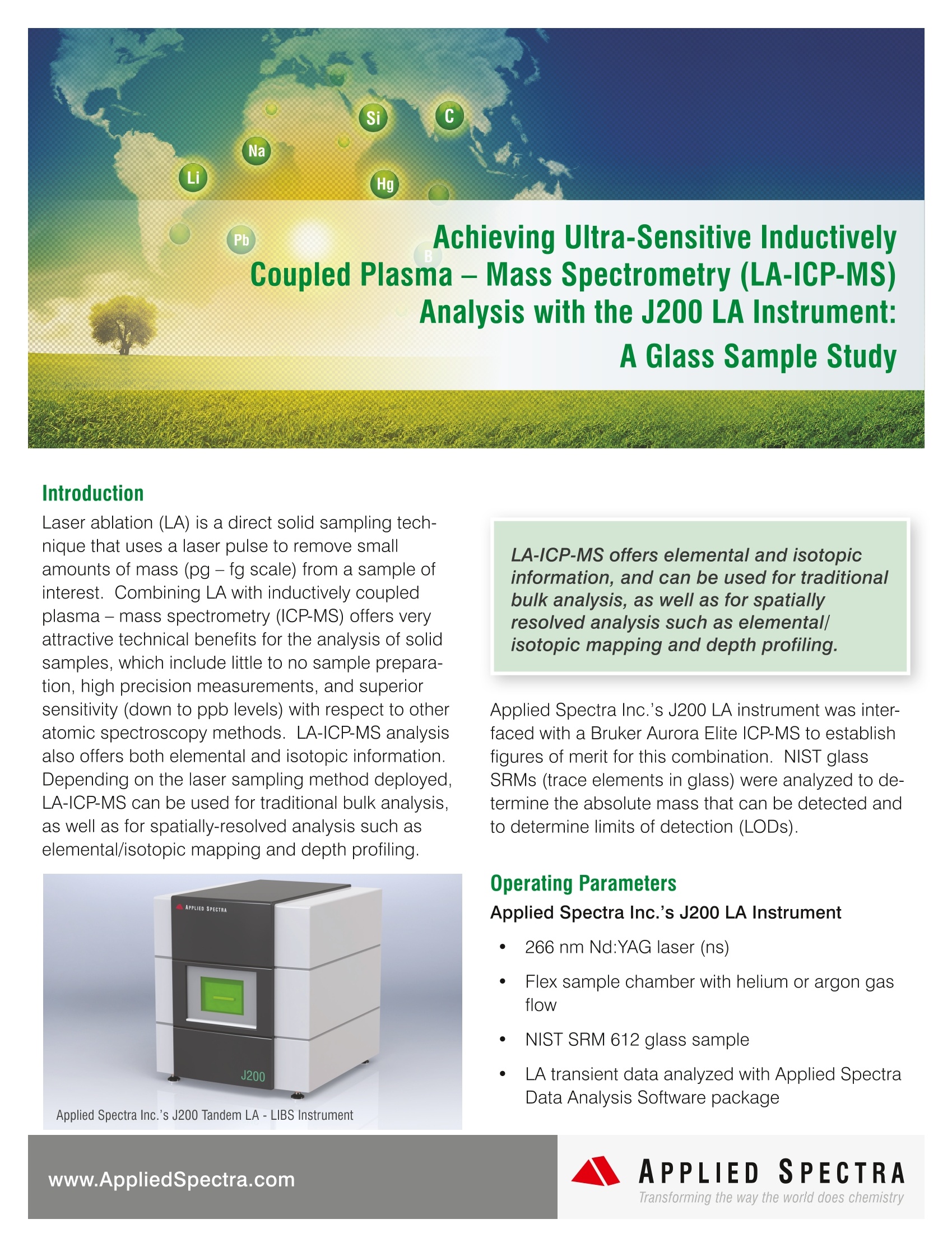
-
2/4

还剩2页未读,是否继续阅读?
继续免费阅读全文产品配置单
北京富尔邦科技发展有限责任公司为您提供《玻璃中多种元素检测方案(激光剥蚀进样)》,该方案主要用于其他中多种元素检测,参考标准《暂无》,《玻璃中多种元素检测方案(激光剥蚀进样)》用到的仪器有美国ASI 飞秒激光剥蚀进样系统(LA)。
我要纠错
推荐专场
相关方案


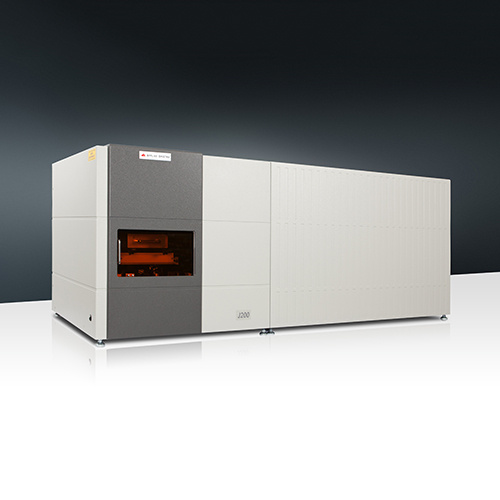

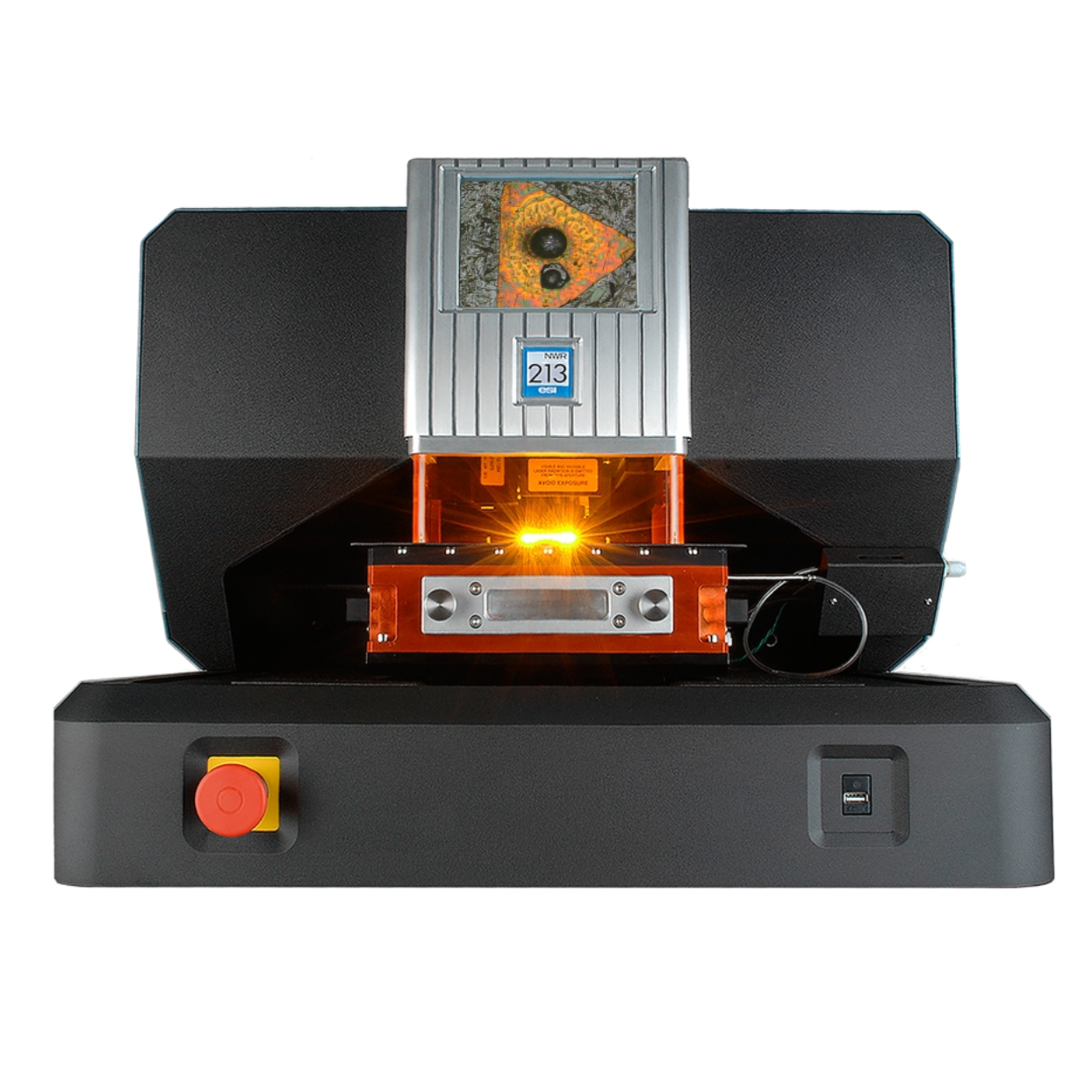

 咨询
咨询
